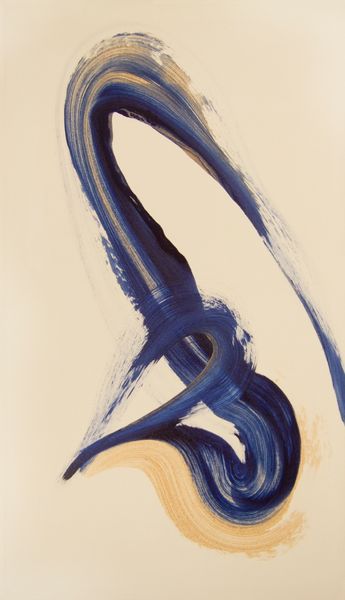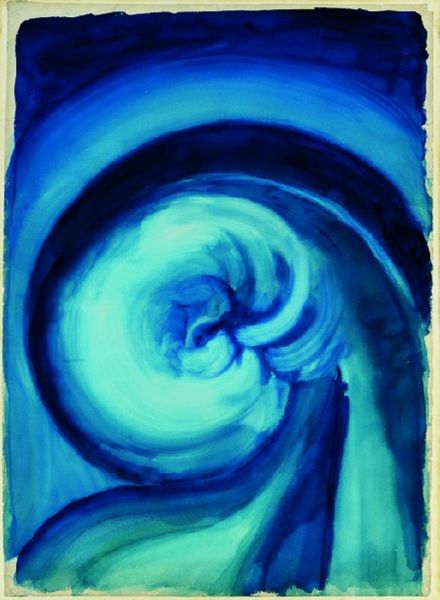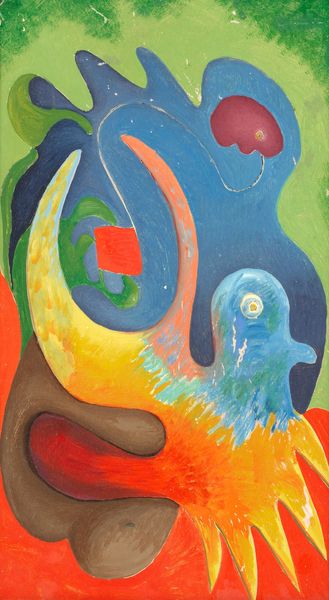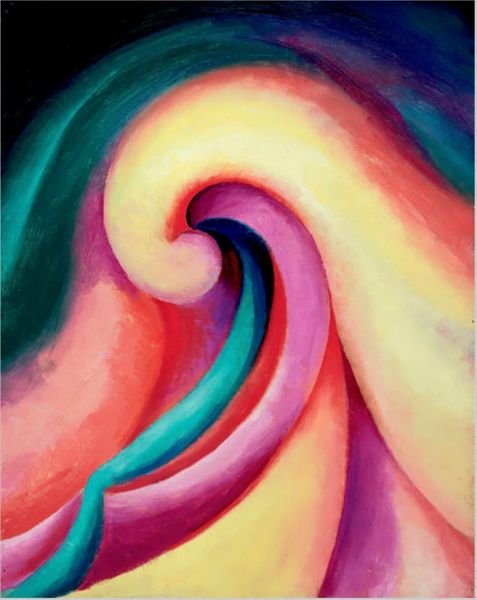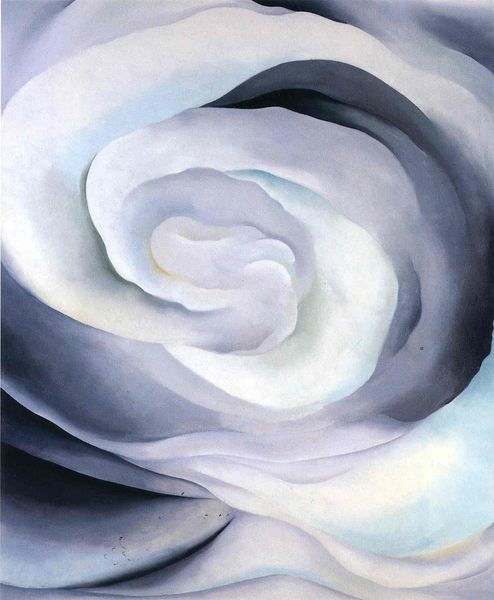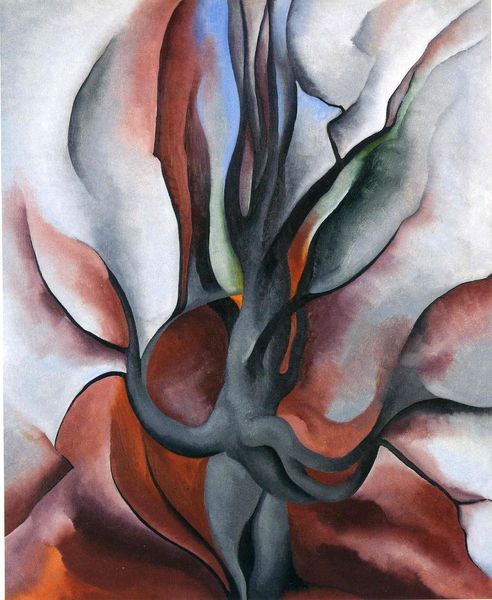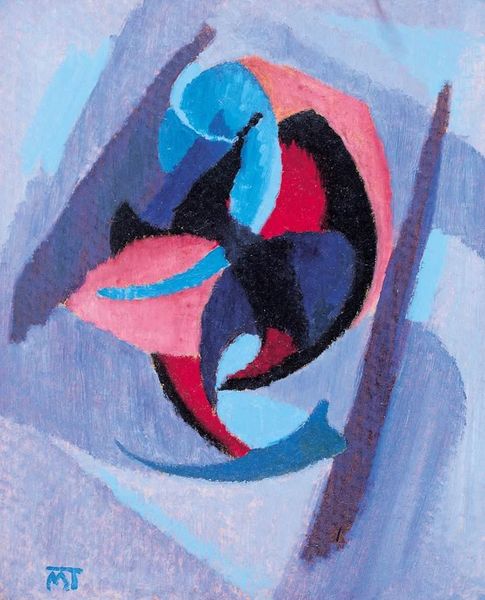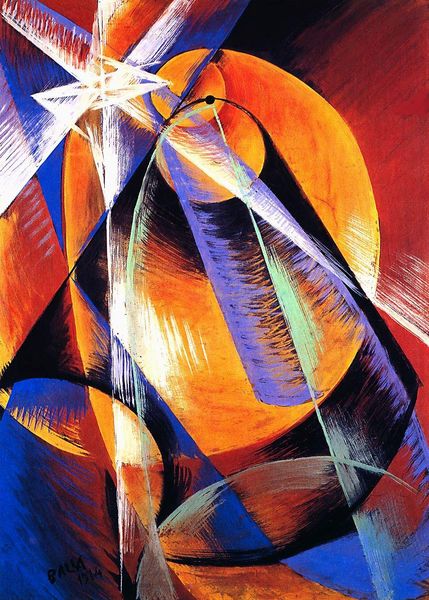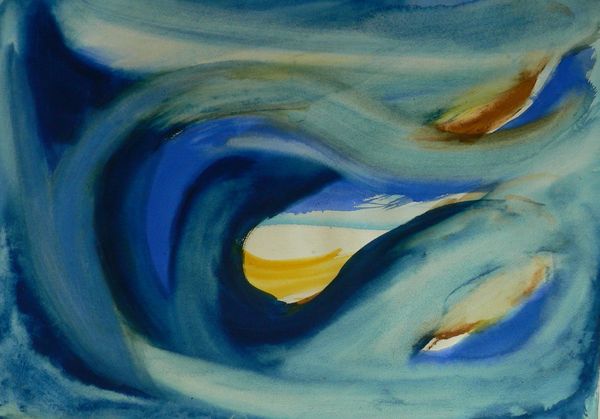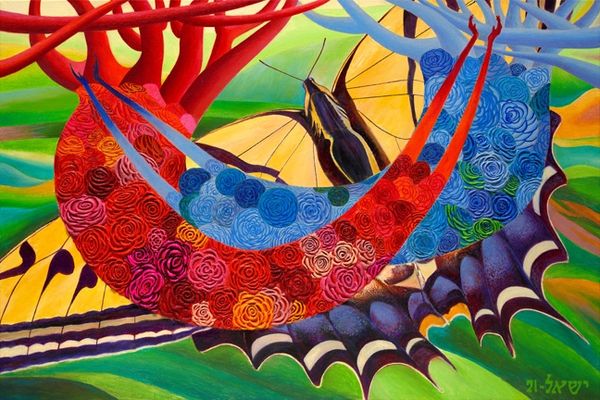
Copyright: Public domain
Editor: This is Aleksandra Ekster’s "Romeo and Juliet, costume for first mask at ball" from 1921. It seems to be mixed media, maybe painting and textile. The dynamism is so captivating; what strikes me is the whirling blue form. How do you interpret this work from a formalist point of view? Curator: It presents a fascinating study in form and movement. The most prominent element, that swirling vortex of blues, dominates the composition. Notice how Ekster employs gradations of color and linear brushstrokes to create an illusion of depth and energy. Do you observe how the sharp angles of the headdress contrast with the fluidity of the larger shape? Editor: Yes, the contrast is quite striking. The headdress and lower black and grey volumes appear more rigid. Is the intention of this artwork related to Futurism? Curator: Indeed. Futurism emphasizes dynamism, speed, and the machine age. Ekster utilizes abstraction to capture the essence of motion. She fragments the figure into geometric forms to simulate multiple viewpoints, conveying a sense of energy appropriate for performance. How does the relationship between positive and negative space inform your understanding? Editor: I see now how the figure interacts with the blank canvas, adding to the overall impression of motion, and of a futuristic figure emerging out of the background. It’s so much more than just an image of a costume. Curator: Precisely. Through formal analysis, we’ve unlocked deeper meanings related to Futurism’s core values. It also highlights the costume's departure from traditional representation. Editor: I understand that form plays a pivotal role. Viewing it this way brings a heightened appreciation for how shapes and lines convey motion. Thank you!
Comments
No comments
Be the first to comment and join the conversation on the ultimate creative platform.
